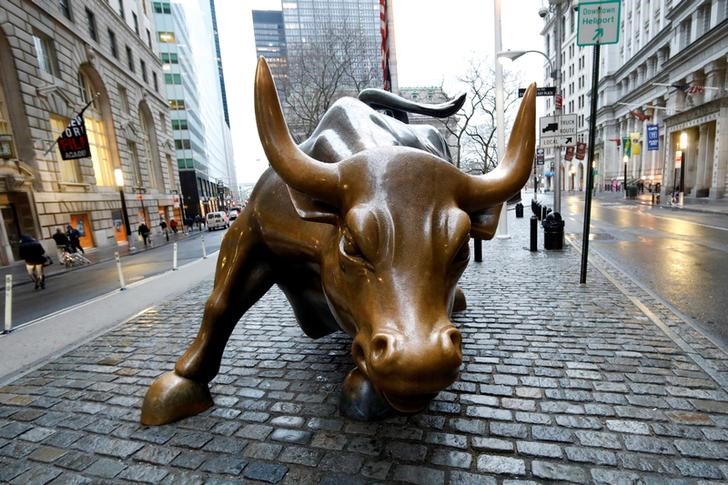By Yasin Ebrahim
Investing.com – The S&P 500 closed lower Wednesday as the tech selloff continued on concerns red-hot inflation is here to stay after jumping the most since 2008, driven by rising auto prices and airfares.
The Dow Jones Industrial Average fell 1.99%, or 682 points, the S&P 500 slipped 2.1%, and Nasdaq Composite slumped 2.7%
The Labor Department said Wednesday its consumer price index rose 0.8% in April, and 4.2% year-on-year, the fastest pace since 2008. Excluding food and energy, core CPI increased 0.9% in April.
"Nearly half of that jump [in the core] was due to sharp increases in used car prices and airfare (both +10% mom), as demand for domestic travel rebounded with further easing in restrictions," RBC said in a note.
The latest update on inflation expectations suggest this is unlikely to be a one and done story.
The 10-year inflation "breakevens” -- a key measure of inflation expectations over the next decade – jumped 2.57%, the highest level since September 2012.
The Federal Reserve has previously reiterated that the factors boosting inflation will eventually run out of steam.
"While this was a massive surprise, the Fed will likely continue to make the case that a lot of these pressures are transitory and will fade later this year as consumer demand for goods subsides and the supply side catches up," Jefferies (NYSE:JEF) said.
Investors continued to shun growth stocks like technology, which have higher valuations that are less attractive in an inflationary environment, where money today is worth more than money in the future.
Google-parent Alphabet (NASDAQ:GOOGL) fell 3%, while Apple (NASDAQ:AAPL), Amazon.com (NASDAQ:AMZN) and Microsoft (NASDAQ:MSFT) fell more than 2%. Facebook (NASDAQ:FB) closed down 1.3%.
Consumer discretionary was also down sharply as Casino stocks and retailers came under pressure with Caesars Entertainment (NASDAQ:CZR) and Gap (NYSE:GPS) leading the decline.
Energy ended flat, outperforming the broader market, with rising oil prices as bullish sentiment on the recovery in crude demand ahead of the summer driving season offset data showing a weekly build in U.S. crude supplies.
Crude oil supplies fell 427,000 barrels last week, compared with analysts' expectations for a draw of 2.817 million barrels.
Looking ahead, some on Wall Street are anticipating further downside in the S&P 500 if selling sparks a meaningful break below 4,100 in the S&P 500.
"Our short-term call for elevated volatility in Q2/Q3 has materialized, and we are still looking at the potential of a correction in the magnitude of -10-15% for the S&P. If 4100 fails to hold on a closing basis in sessions ahead, we are looking at next levels toward the 3800-4000 zone," Janney Montgomery Scott said.
